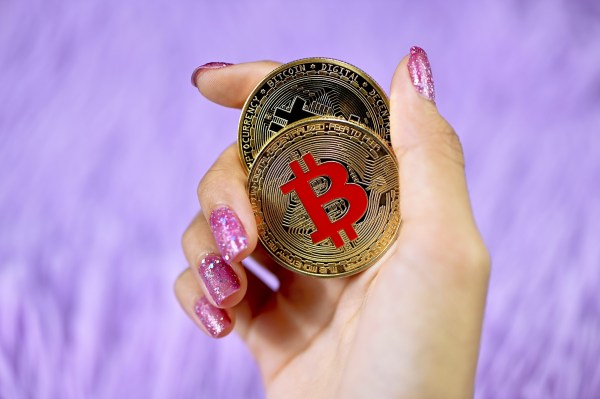
Important information
Don’t invest unless you’re prepared to lose all the money you invest. This is a high-risk investment and you should not expect to be protected if something goes wrong.
Block reward halving events happen every 4 years or 210,000 blocks. Here’s what it all means.
Bitcoin has surged in value during the early stages of 2024 to reach a new all-time high above $70,000, recovering from its drop to just above $16,000 in January 2023, but what could the latest development in the technology – April’s upcoming Bitcoin Halving – mean for its price?
There are multiple factors behind this including the regulatory approval and launch of bitcoin ETFs. There has also been an increased appetite in the market for risk assets such as stocks and even higher risk assets such as crypto, largely due to expectations of interest rate cuts.
Another key factor in both bitcoin’s recent upswing and its overall value proposition is its schedule of “halvings”. The next one is imminent with it expected to fall in mid-April.
In this article we cover:
What is the Bitcoin Halving?
The bitcoin halving refers to the amount of new bitcoin being produced. The blockchain is maintained by “miners”. These are individuals or companies which run specialist computers dedicated to processing bitcoin transactions and adding a new “block” to the chain.
The specialised computers are called application-specific integrated circuits (ASICs). A commonly used model of ASIC is the Antminer, produced by Chinese firm Bitmain.
Antminers and other ASICs cost thousands of dollars to buy. They also generate large electricity bills. With this being so, why would someone be a bitcoin miner?
The answer is the block reward and transaction fees. Each time somebody sends bitcoin they pay a fee in bitcoin for it to be processed. That fee goes to the miners. The block reward is where the halving comes in.
Bitcoin transactions are pooled together into a block, hence the term blockchain. The miners compete to be the one which processes each block. The winner is determined by chance and receives a block reward for doing so in bitcoin.
The amount of bitcoin dished out as a block reward halves every four years.
Read more: Should you invest in bitcoin?
When is Bitcoin Halving 2024?
The schedule for the halving is not actually time based. It is determined by the number of blocks the network has processed. A halving automatically takes place after 210,000 blocks. It is coded into the bitcoin blockchain and cannot be altered.
The reason the four-year timeframe is predictable is because each block takes ten minutes to go through. Three halving events have taken place so far.
The first was in November 2012 when the block reward was cut from 50 bitcoin (BTC) to 25BTC. The second halving took place in July 2016, with the reward chopped from 25 bitcoin to 12.5. The third halving was in May 2020, when the block reward was cut to 6.25 bitcoin.
Bitcoin’s fourth halving is expected to take place on April 19, 2024. The block reward will drop from 6.25 bitcoin to 3.125.
The halvings will continue in approximately four year intervals until all 21 million potential bitcoin have been brought into existence through the block rewards. This is forecast to be the year 2140.
Read more: Is a bitcoin crash coming?
What happened to bitcoin price after previous halvings?
We can never be certain what the price of bitcoin will do in the future. We can see exactly what it has done in the past, though and the price movement following a halving has a clear trend.
In the year after the first halving in 2012, the bitcoin price rose from about $12 to more than $900. From the second halving in 2016 to a year later the price climbed from approximately $600 to $2,500. At the time of the third halving in May 2020 the price was in the area of $8,000 and went on to reach more than $40,000 within a year.
Why has the bitcoin price risen after each halving?
There are two main reasons put forward for why the halving has previously been followed by significant upturns in the price of bitcoin. Firstly there is the supply aspect. New bitcoin arrives in the market though the block reward given to miners. These miners have tended to sell a large proportion of the bitcoin they receive to cover the cost of electricity and buying new, more powerful ASICs.
Other miners might sell their block rewards to pocket the cash. In cutting the block reward by half the amount of potential selling by miners is also halved. Reduced new supply with stable or rising demand tends to push the prices up.
The other side is demand. Because a halving makes bitcoin more scarce, the perception of its value among market participants has risen following each of the previous halvings.
There is also the effect of momentum, and what is often called fear of missing out (Fomo). This refers to people buying an asset simply because they have seen its price rise and, rightly or wrongly, believe it will keep rising.
With the pattern repeating itself three times so far, expectations are strong that the fourth time around will tell a similar tale. There can be no certainty that will be the case though, as past performance is not reliable indicator of future performance.
It is also important to keep in mind that correlation does not mean causation. In other words, if two things such as a halving and a bitcoin price rise occur at a similar time it does not necessarily mean one caused the other. There are many different factors that determine the movement of the bitcoin price.
Important information
Some of the products promoted are from our affiliate partners from whom we receive compensation. While we aim to feature some of the best products available, we cannot review every product on the market.






